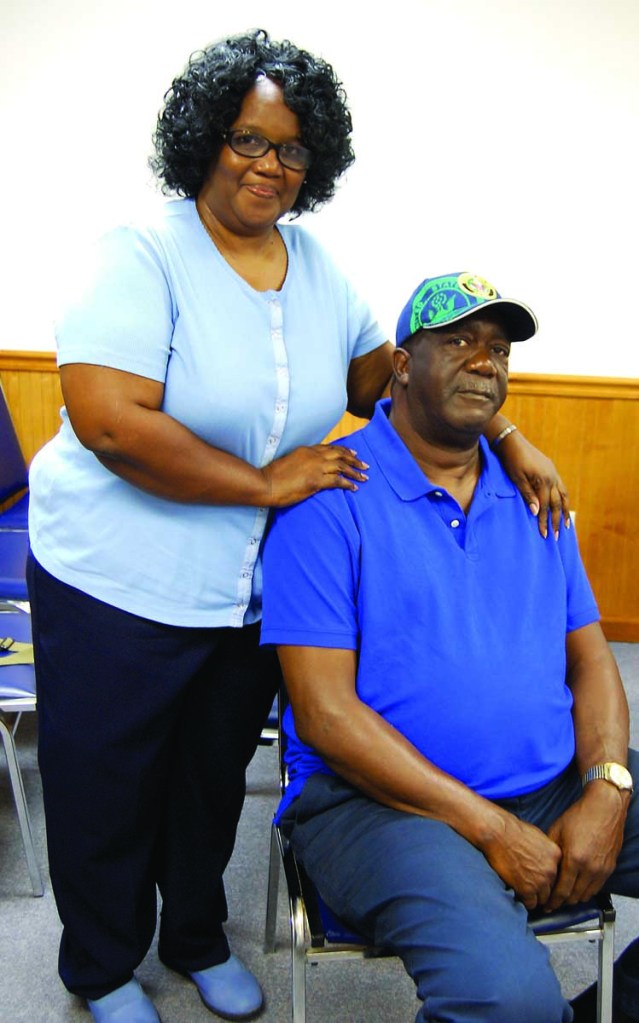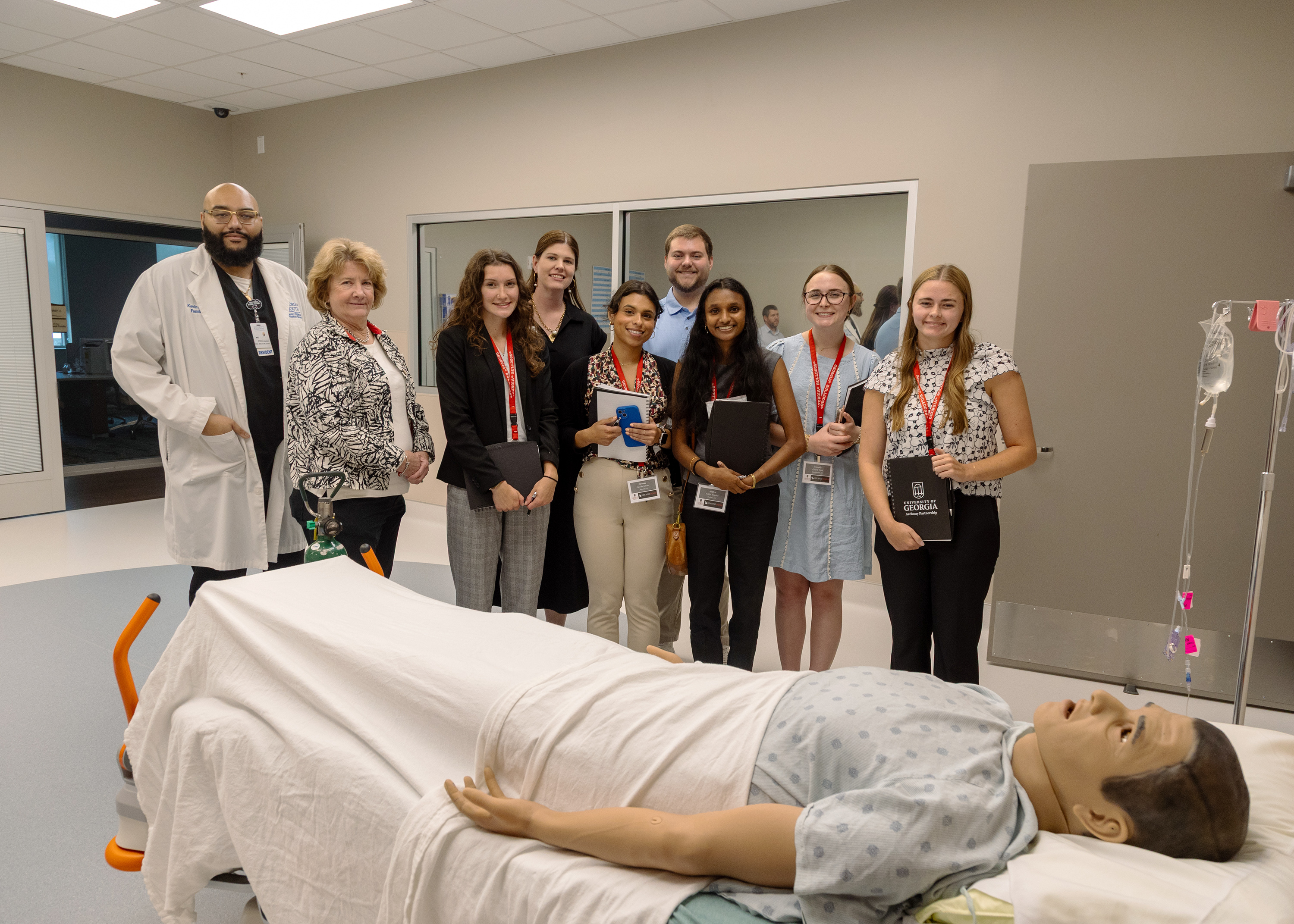Couple ‘highly blessed’ to survive 2000 tornado
Published 3:00 am Sunday, October 8, 2017

- Teresa and Freddie Williams were thrown from their mobile home during the Feb. 14, 2000, tornado that smashed through Camilla. Despite a long hospital stay for Freddie Williams, the couple says they're 'highly blessed' to be alive.
CAMILLA, Ga. — Some people would call the Williams family lucky on the night of Feb. 13, 2000, when a massive tornado struck their Camilla neighborhood, splitting their mobile home in two, with half of it tossed into a large oak tree and the other half never located.
Teresa and Freddie Williams, however, quickly correct the word “lucky” to “highly blessed.”
Freddie, who was launched more than 200 feet, received the most serious injuries in the family when the first of two tornadoes struck Mitchell County within hours.
Teresa was thrown into a neighbor’s yard next door, while son Bryant, then 13, and his cousin Joe ended up in the back yard of the Williams’ Goodman Road residence.
“Freddie got thrown, they said, 250 feet,” Teresa Williams said. “He was out there in a field.”
The first of two powerful storms that struck Camilla that day struck around midnight Feb. 14 and is referred to in the area as the Valentine’s Day Tornado.
Ten people were killed when the F3 tornado struck the Goodman Road area, which included a large percentage of mobile homes. Brick houses across U.S. Highway 19 also were demolished by the powerful twister.
On the Fujita Tornado Damage Scale, tornadoes are rated from F0 for twisters that have winds of less than 73 miles per hour with a maximum of up to 318 miles per hour for the most extreme F5 storms, according to the U.S. National Weather Service.
An F3 storm has winds measured at 158 to 206 miles per hour and is able to tear walls off well-constructed houses, overturn trains, uproot most trees in their paths and pick up and toss around heavy cars.
An eleventh person died when a second storm came through at about 5:30 a.m., basically following the trail of the first storm.
At the Williams’ home, Teresa had just got back from her job at a hunting plantation in the county owned by Cader Cox shortly before the first tornado struck that evening.
“We went to go to bed. Freddie had bought me two Valentine’s gifts, a bottle of perfume and a bottle of wine,” she said. “I was sitting there looking at them.”
While there was heavy rain falling on Teresa’s drive home, neither she nor her neighbors were aware of the half-mile wide funnel cloud closing in.
“It felt like the wind picked up the trailer,” Teresa Williams said. “We heard the window pop. Freddie said hit the floor. It hit right then.”
The next memory she has is of being in the yard of neighbors who said she should not look for her husband but go immediately to the hospital and allow rescue workers to search for him.
“I didn’t feel anything,” Freddie Williams said in that brief moment before hearing the window pop and the train-like sound of the twister. “I just told them to hit the floor.”
Mitchell County Hospital acted as the triage unit for the nearly 200 people injured in the storm’s path of destruction that demolished 200 houses and damaged 250 more.
Freddie, who had a concussion, all of his ribs broken, a punctured lung and a fractured windpipe, was taken to Archbold Memorial Hospital in Thomasville, where he slept for nine days.
Amazingly, Teresa was unhurt, Bryant had a broken finger and Joe had some minor cuts and bruises.
“I was told the house where we were staying, the frame was wrapped around a tree,” Freddie Williams said.
After 21 days, he returned home on a Saturday, and that night he was unable to breathe. He returned to Archbold and was rushed to Emory University Hospital in Atlanta. The following Wednesday doctors diagnosed the trachea injury that had not been detected earlier.
They installed a stent and Freddie returned home again, but the first Saturday, he was home the stent fell in his chest, Teresa Williams said. He was returned to Emory.
“I almost died three times,” said Freddie Williams, who remembers nothing from the time he told the family to drop to the floor and waking up in the Thomasville hospital.
In all on that night and morning, four strong super cells produced cyclones that touched down, cutting swaths through the area that also included parts of Colquitt, Grady, Thomas and Tift counties. Six people were killed in Grady County, and one in Colquitt County near the Tift County line.
Damage in Mitchell County was estimated at $20 million. The Grady County twister also destroyed eight poultry houses, killing an estimated half-million chickens
All of the deaths occurred in mobile homes, and in the rebuilding of Camilla, efforts were made to get survivors into more sturdy structures. Among those helping in that effort were the Camilla Housing Authority and Habitat For Humanity.
Teresa Williams’ boss helped by donating money and taking up a collection from hunters who visited the quail plantation. The family was left only needing to borrow $5,000 to build their three-bedroom house about two streets from Goodson Road.
“Mennonites came in and they built it,” she said. “We bought the materials. They didn’t charge anything. In five years, it was paid for.”
Both said they can handle a certain amount of stormy weather these days.
“As long as it’s raining, it don’t bother me; when the wind blows …” Freddie Williams said, not completing the sentence.
“It shakes me up a little bit,” Teresa Williams said. “It’s an experience I don’t want to go through no more.
“I feel like God was trying to get our attention. He got mine. We’re blessed to be here.”
In one of those oddities of tornadoes, the storms frequently take the same path on multiple occasions.
Codell, Kansas, for example was hit by tornadoes in 1916, 1917 and 1918. More amazingly, the twisters hit on May 20 each of those years.
So it was for Camilla, after the two powerful twisters tore through on Valentine’s Day, a little more than three years later the same Goodson Road neighborhood was demolished again. The storm also destroyed the chicken houses in Grady County that replaced those flattened in 2000.
The storm from which it grew moved northeast from the Florida panhandle, as had its predecessor three years earlier. As an F3 twister, it again destroyed dozens of homes and damaged more than 150, according to the National Weather Service.
“Unbelievably, another F3 tornado followed nearly this same track back in February 2000,” an agency report on the weather event said. “Some residents in Camilla rebuilt homes destroyed by the tornado three years ago, only to find their new homes damaged or destroyed by this tornado.”
Four people in that area were killed in this tornado, which was on the ground for 25 minutes along a 19-mile path, while two were killed in Worth County.
Mitchell County Administrator Clark Harrell, who was a sheriff’s office investigator in 2000 and emergency management director in 2003, said better-built houses and better warnings helped make the second storm less deadly.
“In September 2000, we started working with emergency management, started looking at ways we can better inform citizens,” Harrell said. “At that time we had (programs) where we gave weather radios away.”
Nowadays, cell phones are ubiquitous and nearly everyone seems to have a weather alert application on theirs, he said.
“Also, the Weather Service has gotten much better over the years,” he said. “Before 2000, severe weather was just common. A tornado watch was just common. I certainly didn’t respect the weather as I do today.”





